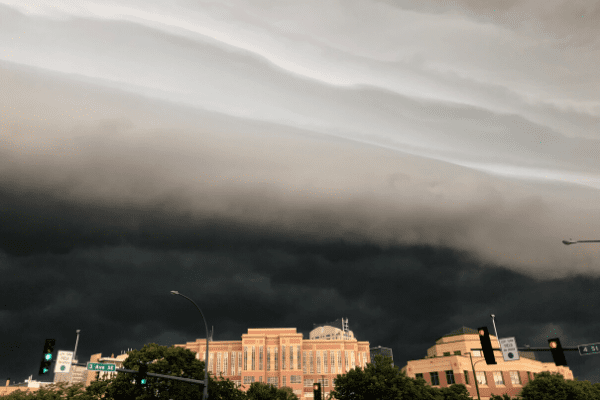 Spring has sprung! And with spring comes all sorts of weather: snow, rain, maybe some more snow, and the threat of severe weather. Each year the state of Minnesota collaborates with the National Weather Service to educate, give safety tips, and remind the wonderful citizens of Minnesota about the threat of severe weather.
Spring has sprung! And with spring comes all sorts of weather: snow, rain, maybe some more snow, and the threat of severe weather. Each year the state of Minnesota collaborates with the National Weather Service to educate, give safety tips, and remind the wonderful citizens of Minnesota about the threat of severe weather.
There are multiple different types of severe weather that can happen in our area:
Thunderstorms
Every thunderstorm, whether it be relatively small or severe, has the potential to be dangerous. A thunderstorm can produce winds up to 100 mph and have a variety of different sizes of hail (from pea size to softball size) that can leave significant damage. Lightning is also a big part of a thunderstorm. When you hear thunder, lightning is nearby! Get indoors and away from windows. If you are on a body of water (swimming pool, lake, river), get out of it as soon as you can. Remember our parents telling us not to take a bath or do dishes during a thunderstorm?! There is truth to this! The electricity in lightning can be conducted through the water. And if you have a corded phone in your house, don’t use that either.
Flooding
Storms will produce rain and sometimes it is a lot of rain which can lead to flooding. Flash floods have happened here in Rochester, with quite a few of them happening last year. Never, ever, ever cross a flooded path. Even just 6 inches of water can create a strong enough current to knock you down and possibly sweep you downstream. This can also happen with your vehicle. Turn around, don’t drown.
Tornados
Tornados can be the scariest of the severe weather. Tornados can happen at any time of the day and in any setting (country and big city). Tornados can be incredibly destructive and it is very important to have a tornado safety plan in place for when a tornado watch or warning is issued.
Tornado Safety
Where do you go when a Tornado Warning has been issued? The most important thing is to get away from any windows at all costs. Debris can fly through windows, shattering them.
- If your house has a basement, go to the basement and get under something sturdy and cover yourself with a blanket, mattress, or sleeping bag
- If you live in a house doesn’t have a basement, go to the lowest floor and to a small interior room without windows (closet or bathroom). Cover yourself with a blanket or sleeping bag, get low to the floor, and cover your head.
- If you live in an apartment or condo, get to the lowest floor as soon as you can (an underground garage or a first-floor apartment) and get to the nearest interior room. Cover yourself with a blanket or sleeping bag, get low to the floor, and cover your head.
Emergency Preparedness Kit
Having an emergency weather preparedness kit is important during any season! First and foremost, it is important to have a weather radio. This will alert you when a watch or warning has been issued for your area. The weather radios can run off of batteries in the event of a power outage. You can purchase a weather radio anywhere! Next, the kit that you and your family build should include essentials that each family member would need in case the power is out (remember, don’t open your fridge or freezer during this time!), the water is not functioning, or you are without a home. Update your kit each season as kids grow! Here are some ideas of additional things to include in your kit, depending on your family and age of your kids:
- Water (at least 1-2 bottles per person)
- Non-perishable food items (granola bars, goldfish crackers, fruit snacks, protein bars)
- A phone charger
- Diapers and wipes (remember, if all is lost in a disaster, you will want a couple on hand)
- Formula packets and water
- Baby bottles
- A change of clothes
- A candle and matches/lighter (in the event of power outage)
- Blankets to cover your heads with and to keep warm afterwards
- Books and activities to keep kids busy. We’ve read these during a tornado warning to keep Gwen busy and calm during a scary time.
- First Aid Items: Disposable ice packs, bandaids, ace bandage, and over-the-counter pain medication (Tylenol/ibuprofen)
- Flashlight
Put your kit together in a backpack that can be easily grabbed to get to your safe place (if your safe place is outside your apartment/condo), or keep it in a tote stationed in your safe place.
Remember to establish a plan and practice, keep your eyes on the sky, and stay safe during severe weather!





